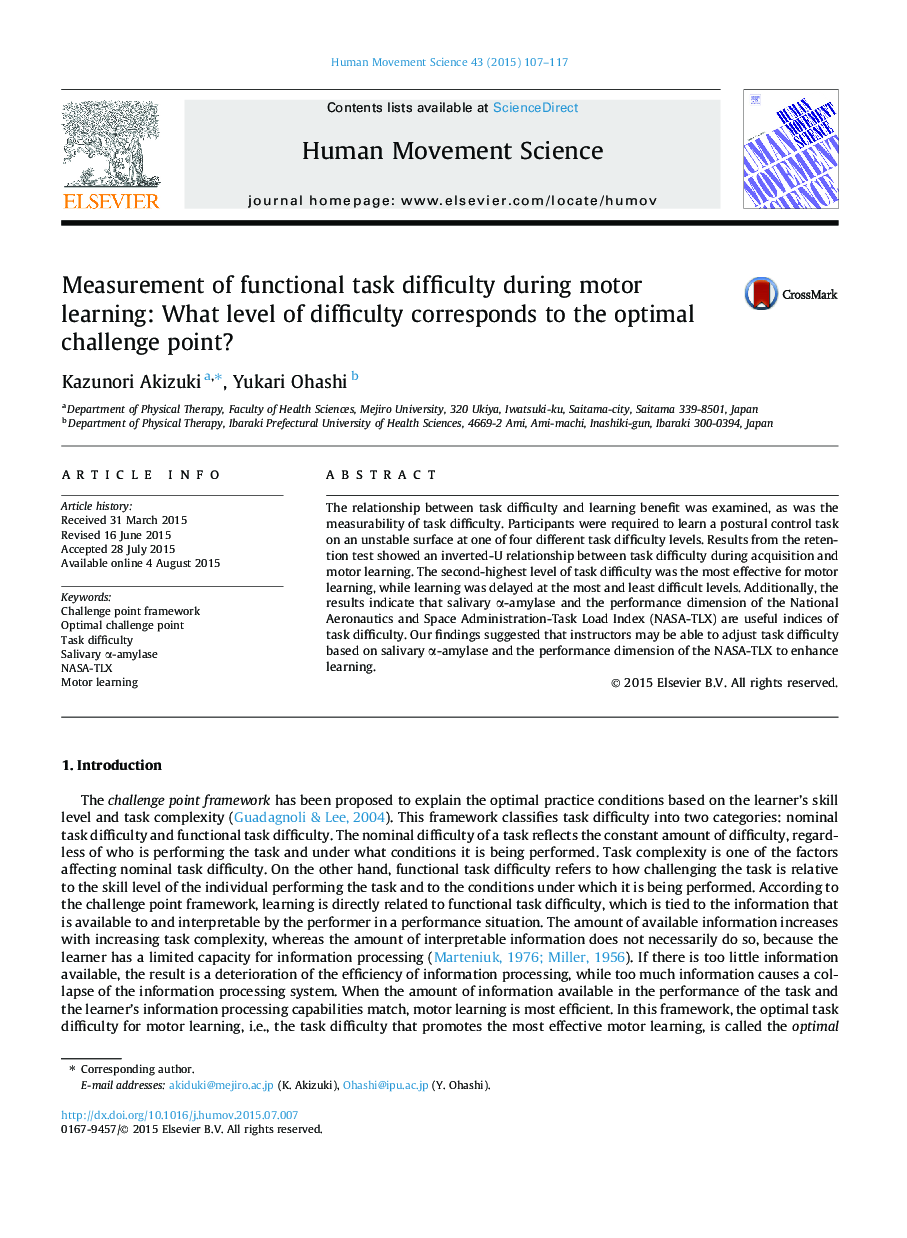| Article ID | Journal | Published Year | Pages | File Type |
|---|---|---|---|---|
| 928268 | Human Movement Science | 2015 | 11 Pages |
•We investigated the relationship between task difficulty and learning benefit.•We evaluated task difficulty using salivary α-amylase and the NASA-TLX.•An inverted-U relationship was found between task difficulty and motor learning.•Motor learning was optimal when salivary α-amylase increased by 81% from baseline.•Motor learning was optimal when the performance dimension of the NASA-TLX was 51.5.
The relationship between task difficulty and learning benefit was examined, as was the measurability of task difficulty. Participants were required to learn a postural control task on an unstable surface at one of four different task difficulty levels. Results from the retention test showed an inverted-U relationship between task difficulty during acquisition and motor learning. The second-highest level of task difficulty was the most effective for motor learning, while learning was delayed at the most and least difficult levels. Additionally, the results indicate that salivary α-amylase and the performance dimension of the National Aeronautics and Space Administration-Task Load Index (NASA-TLX) are useful indices of task difficulty. Our findings suggested that instructors may be able to adjust task difficulty based on salivary α-amylase and the performance dimension of the NASA-TLX to enhance learning.
